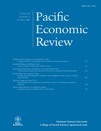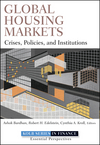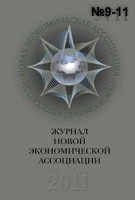Publications in 2011
Liquidity Measures, Liquidity Drivers and Expected Returns on an Early Call Auction Market
 |
Author: Gelman S., Burhop C. MPI Collective Goods Preprint 2011, No. 2011/19, 56p. We analyze the determinants of illiquidity and its impact on asset pricing for purely call-auction traded stocks on Berlin Stock Exchange using 22 years of daily data (1892-1913). We use the Lesmond et al. (1999) measure of transaction costs to proxy illiquidity. We show that transaction costs were low and comparable to today’s costs. Liquidity was negatively correlated with active informed trading, particularly being low for small and distressed stocks and in crises times. Liquidity concerns were a major driver of asset pricing: we find significant illiquidity level and illiquidity risk premia as well as an explicit premium for informed trading. JEL-Codes N23; G12; G14 Key words: Transaction Costs, Liquidity Premium, Informed Trading |
The choice of ownership structure: Evidence from Russian mass privatization
 |
Author: Sprenger C. Journal of Comparative Economics //Volume 39, Issue 2, June 2011, p.260-277 We use a large data set of Russian manufacturing firms to describe the ownership structure in the Russian industry at the end of the mass privatization program in 1994 and its subsequent evolution. The data shows a high, but gradually decreasing ownership stakes of firm insiders (managers and workers). We estimate the effect of a wide range of firm characteristics on the decision to privatize, the initial ownership structure after privatization, and on subsequent changes of ownership stakes. We test and find support for several predictions of the model by Aghion and Blanchard (1998). For example, collusion among workers makes them more reluctant to sell shares to outsiders. Firms in financial distress show a higher incidence of insiders selecting the option of privatization leading to high insider ownership. This can be explained by their desire to insure against unemployment in the case of restructuring by outsiders. No evidence is found of a sequencing in privatization according to the performance of firms before privatization. A methodological novelty of this paper is the application of a tobit model with sample selection to the choice of ownership stakes. |
Linkages between Exchange Rate Policy and Macroeconomic Performance
 |
Author: Sokolov V., Lee BJ., Mark N. Journal: Pacific Economic Review 2011 № 16(4). pp.395—420 From a panel of 137 countries over the years 1971 to 2002, we find evidence that an exchange rate policy of "fear of foating.(de jure foat and de facto peg) is associated with superior macroeconomic performance in non-industrialized countries. We examine four different measures of performance- per capita GDP growth, ii) the CPI inflation rate, iii) GDP growth volatility, and iv) inflation volatility - and how they respond to a 'words versus deeds' measure of exchange-rate policy obtained by interacting a country's de jure exchange rate policy with its de facto policy as codified by Rogoff and Reinhart (2004). For non-industrialized countries, the highest GDP growth rates are associated with those who pursue fear of .fating whereas the lowest inflation rates are achieved by countries that pursue a matched fix (de jure and de facto fixing). Countries that exhibit fear of foating also experienced the lowest GDP and inflation volatility while those that pursued a matched de jure and de facto .oat experienced the greatest macroeconomic instability. |
Financial crises and structural breaks in autocorrelation on the BRICs’ stock markets
.jpg) |
Author: Gelman S., Saldakeeva O., Smirnova G. The Global Financial Crisis of 2007-2009 has highlighted the resilience of the financial markets and broader economies from the developing world. This outcome owes much to the bitter experience and economic strategies developed and implemented at both a national and international level following the Asian Financial Crisis of 1997-1998. The objective of this volume is to investigate and assess the impact and response to the crisis from an emerging markets perspective including asset pricing, contagion, financial intermediation, market structure and regulation. Our hope is that the assembled papers will offer clear insights into the complex financial arrangements that now link emerging and developed financial markets in the current economic environment. The volume spans four dimensions: first, a series of background studies offer explanations of the causes and impacts of the crisis on emerging markets more generally; then, implications are considered. The third and final sections provide insights from regional and country-specific perspectives. |
The Housing Market and Housing Finance in Russia and Its Regions – A Quantitative Analysis
 |
Author: Sprenger C., Urosevic B. This chapter provides a quantitative analysis of the housing and housing finance markets in Russia and its regions. Russia has experienced a sharp decline in mortgage lending at the end of 2008 and beginning of 2009 as a response to the liquidity problems in international financial markets. The decline in house prices has been, however, only moderate. The chapter focuses on the differences in prices and market conditions in Russia's regional housing and mortgage markets. It identifies the main drivers of housing prices using panel data for 80 Russian regions. Furthermore, the chapter discusses the default experience of mortgage loans during the crisis. The difference in default rates between ruble and dollar-denominated mortgage loans is discussed in connection with the large ruble depreciation in 2008 and 2009. |
Tracing the Impact of Central Bank Liquidity Infusions on Financially Constrained Banks: Evidence from a Natural Experiment
 |
Author: Sokolov V. Журнал Новой экономической ассоциации, 2011 Using data on foreign borrowing by Russian banks, I identify banks thatwere Önancially constrained at the onset of the sudden stop caused by thecollapse of the Lehman Brothers in September 2008. In a natural experimentset-up, I trace the impact of liquidity infusions by the Central Bank of Russia (СBR) on banksí funding and lending decisions. Applying the di§erence-indi§erence method, I Önd that Önancially constrained banks increased theirdemand for central bank funding relatively more than non-constrained banksafter the crisis. Secondly, I Önd that despite the fact that Önancially constrained banks obtained CBR funding, they nevertheless cut their lending tocorporate borrowers in a short-term maturity segment relatively more thannon-constrained bank. My last Önding is that Önancially constrained banksincreased lending to corporate borrowers in the long-term maturity segment.This result is puzzling and is probably due to the fact that banks were forcedto extend the terms of credit to existing borrowers after the crisis. JEL classifcation: G21, E44 Keywords: banks; fnancial constraints; natural experiment |
Have you spotted a typo?
Highlight it, click Ctrl+Enter and send us a message. Thank you for your help!
To be used only for spelling or punctuation mistakes.